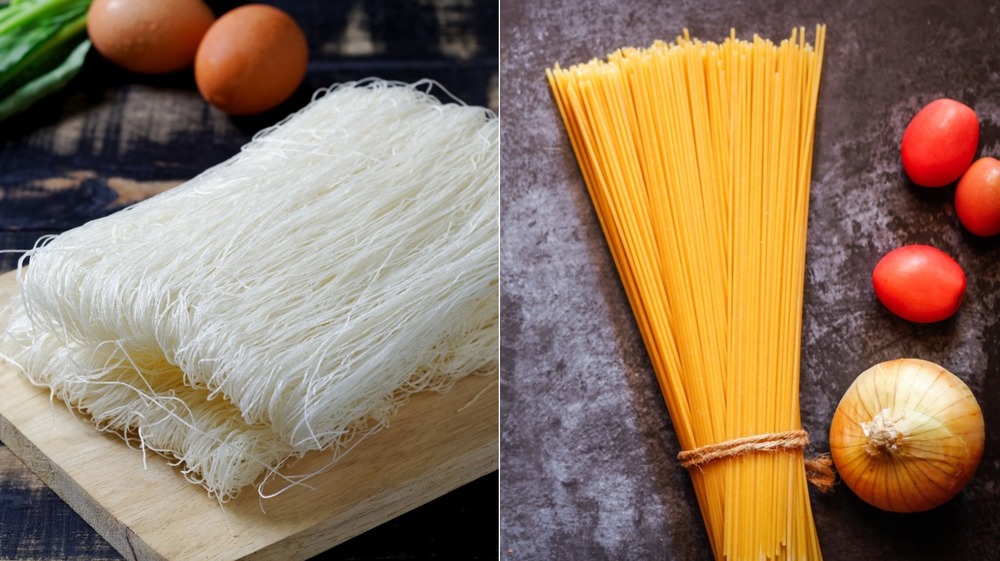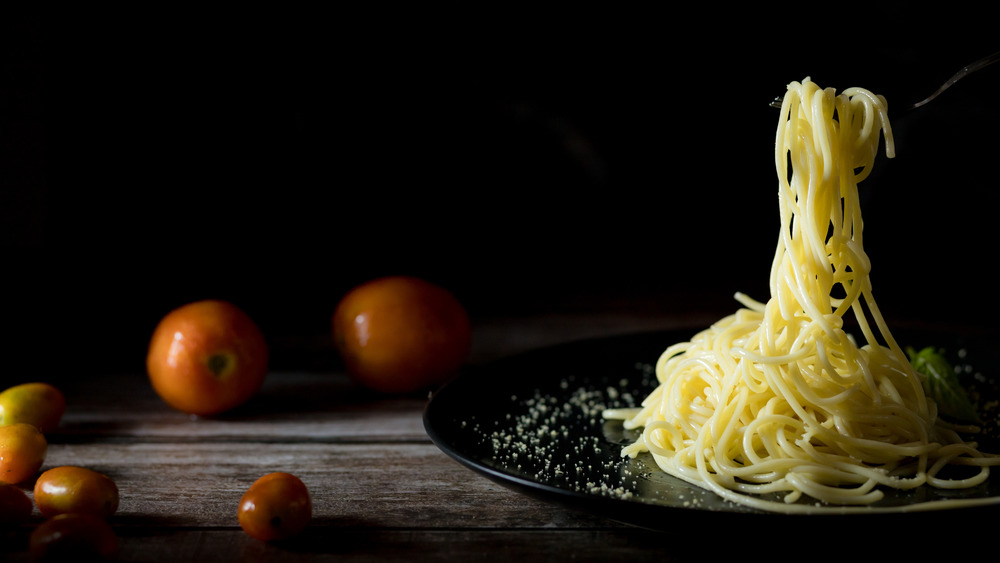Rice Noodles Vs. Pasta: Which Is More Nutritious?
When the craving for a big bowl of starch strikes, it can be a daunting task deciding between rice-based noodles and flour-based pasta. Both hit the mark in terms of satisfying, satiating carbs, but is one more nutrient-dense than the other?
Behind whole grains of rice, rice noodles are the second most common rice product in Asia (via the San Francisco Chronicle). In the US, spaghetti and other flour-based pastas are more popular. Both options are similar in terms of calories and fat, but one noodle reigns supreme when it comes to specific nutrients.
It's important to note that both rice noodles and pasta are made with refined grains, meaning they're stripped of their bran and germ (via The Jakarta Post). Noodles made from refined white flour and refined white rice offer the least amount of nutrients and fiber when compared to their whole-grain counterparts (via Well and Good).
That said, rice noodles and regular pasta contain about the same calories per half-cup serving — 96 for rice noodles and 111 for pasta. And both are very low in fat — hovering around 0.5 gram per half-cup serving (via the San Francisco Chronicle).
There's a clear difference when it comes to protein and nutrients
If you're looking to up your protein intake, it's pasta all day long. According to the USDA, one cup of rice noodles has 3 grams of protein, while the same amount of enriched spaghetti has 9 grams (via USDA).
Enriched pasta delivers a wide range of nutrients rice noodles simply can't offer, and opting for whole-grain pasta is even better (via Body and Soul). Enriched pasta is just that: pasta that's been enriched with nutrients that were stripped from the grain during processing (via Healthline). And unrefined, whole-grain pasta contains the wheat kernel, which boasts the nutrient-rich bran and germ.
When it comes to vitamins and minerals, enriched pasta contains more iron, thiamin, niacin, riboflavin, and folic acid (via So Delicious). The difference is truly noticeable when you compare folic acid, aka folate — pasta delivers 83 micrograms of folate per serving, while rice noodles have 3 micrograms. Regular pasta also has ten times more thiamin and riboflavin, eight times more iron, and twice as much niacin as rice noodles (via Rigatoni and Things).
According to Oldways, eating a balanced amount of both whole and enriched grains ensures a diet rich in essential vitamins, minerals, and phytonutrients that promote well-being and help reduce the risk of chronic disease. But what if you're gluten-free? Then rice noodles are your huckleberry. Because they're made with rice flour, not wheat flour, rice noodles contain no gluten (via the San Francisco Chronicle).

